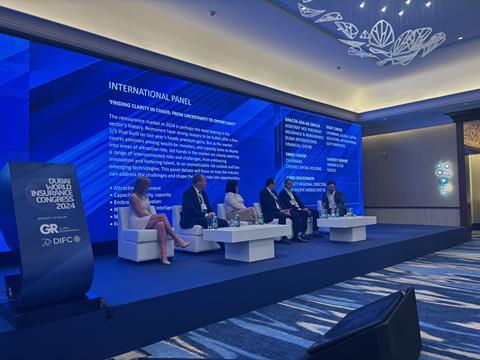The world is in a “manageable plateau of chaos”, says Chris Mackinnon, deputy regional director, Asia Pacific, Middle East & Africa, Lloyd’s, but insurers and reinsurers must adapt to help businesses survive.
The world is in a state of chaos, characterised by interconnected risks and high volatility.
However, for Chris Mackinnon, deputy regional director, Asia Pacific, Middle East & Africa at Lloyd’s, this creates significant opportunities for the industry.\

Speaking at a panel at the Dubai World Insurance Congress 2024, he said: “The way we’re describing it at Lloyd’s is really as being a manageable plateau of chaos.
“We understand chaos, and in fact, we as an industry major on volatility. So it’s an opportunity for us to manage some of the chaos that is going on in the world.”
He argued that whilst there is a lot of investment coming in and opportunity for investors to come into the market, there needs to be better recognition that insurance is not just an annual benefit, it is a long-term, ongoing investment in that capital.
He explained: “When we look at 2023, which was a phenomenal year, Lloyd’s posted its best results ever in 2023, but it was one year.
“And to be frank, we were lucky because the wind didn’t blow in 2023. Had it blown, it would have been a different story. But if we then average the return on the capital over the last six years, even including the great results from 2023, it was 3.6% return on capital.
“It’s not good enough. It’s not good enough to accommodate the volatility and the uncertainty that we have in the world at the moment.”
To counter this, he said that insurers must really work on not just looking at traditional risk transfer and instead focus on helping organisations to build resilience and manage risk.
He said: “On that basis. We have to look much deeper than that. This is about building long-term partnerships with investment and mitigation, building resilience, working in partnership with governments and the private enterprise to be able to create a sustainable platform going forward.
“We don’t have enough risk bearing capacity in the market to deal with the risks that we know we have, and those risks are changing as well.”
He gave the example of the shift between tangible and intangible risks as one key area where the market has changed significantly, sharing that ten years ago in Lloyd’s, 29% of the portfolio written was long tail classes, but this has grown to`40%.
He concluded: “There is a massive shift away from tangible assets. And intangible assets are now the primary area on the balance sheet that we’re being asked to fix. This is long tail liabilities, so we can’t look in isolation with a single year of great results and power sales on the back of that. We’ve got to continue to work and grow the market sustainability over a long period.”










No comments yet